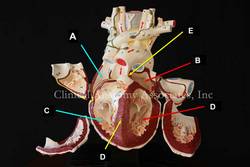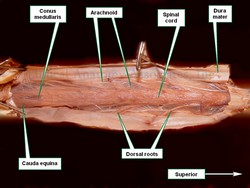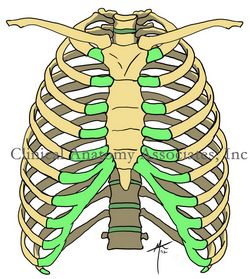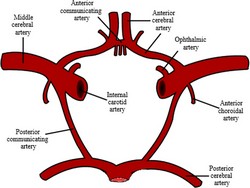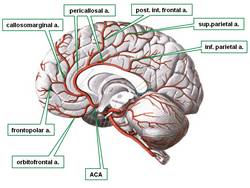|
The word [thorax] is Greek and means "chest", "chest plate" or an area covered by a chest plate. The root term is [-thorac-].
The thorax is the region of the trunk found between the neck superiorly and the abdomen inferiorly. It is characterized by a bony cage (thoracic cage). It is bound anteriorly by the sternum, laterally by twelve pairs of ribs and corresponding cartilages, and posteriorly by the thoracic spine, composed by twelve thoracic vertebrae.
Its superior boundary is known as the thoracic inlet or superior thoracic aperture, and it an oblique plane formed by the superior aspect of the sternum, the first rib, and the first thoracic vertebra. The inferior boundary is more difficult to describe, as there are two boundaries. The first is the inferior thoracic aperture or outlet formed by the lower end of the sternum, the cartilage of the costal margin and the most inferior ribs. The second one is the boundary between thorax and abdomen. formed by the respiratory diaphragm.
The thoracic cavity is divided into three separate regions; two laterally situated pleural regions, each containing a lung, and a centrally situated mediastinum. The mediastinum contains the heart and pericardium, the trachea and bronchi, thoracic duct, thoracic esophagus, etc.
|
Thorax - Anterior view. Click on the image for a larger version.
|



